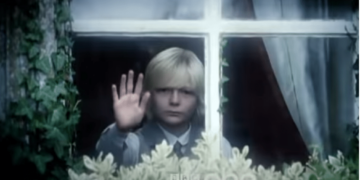Henry James, a renowned American author, was born on April 15, 1843, in New York City. His father, Henry James Sr., was a prominent intellectual figure, which greatly influenced James’s upbringing. James came from a wealthy family and received an excellent education, studying in both the United States and Europe. His exposure to different cultures and social classes played a pivotal role in shaping his unique writing style.
Throughout his career, Henry James wrote numerous novels, short stories, plays, and essays. His works are known for their intricate psychological characterizations and exploration of human relationships. James’s ability to depict the complexities of human nature made him a literary genius of his time and continues to captivate readers today.
Henry James’s Impact on the World of Cinema
Henry James’s literary works have not only left an indelible mark on the world of literature but have also inspired many filmmakers. The rich tapestry of his narratives, filled with nuanced characters and compelling storylines, provides a wealth of material for cinematic adaptation. Directors and screenwriters have embraced James’s works, successfully bringing them to life on the silver screen.
One notable example is the screen adaptation of James’s gothic novella, “The Turn of the Screw.” This chilling tale of a governess haunted by malevolent spirits has been adapted multiple times, captivating audiences with its atmospheric suspense. The story’s intricate psychological elements have made it a favorite among filmmakers, as they explore the depths of fear and paranoia on screen.
Exploring Henry James’s Love Life and Friendships
Behind every great writer lies an intriguing personal life. Henry James’s love life and friendships were no exception. Despite never marrying, James had several significant relationships that influenced both his personal life and his writing.
One important figure in James’s life was his close friend and confidant, Constance Fenimore Woolson. Their deep friendship lasted for over two decades, and their correspondence reveals a profound emotional connection. Another significant relationship was with his cousin, Minny Temple, who tragically passed away at a young age. Her untimely death had a profound impact on James, inspiring themes of innocence and loss in his later works.
While James’s personal life may have been devoid of romantic entanglements, his deep and meaningful friendships provided him with the emotional support and intellectual stimulation necessary for his creative endeavors.
The Rich and Poor in Henry James’s Works
Henry James’s works often delve into the complexities of social class, contrasting the lives of the rich and the poor. His keen observations and subtle critiques of class distinctions are evident throughout his body of work.
In novels such as “The Portrait of a Lady” and “The Wings of the Dove,” James explores the lives of wealthy characters and their interactions with individuals from lower social classes. He delves into the complexities of power dynamics, exposing the tensions and challenges that arise when different social classes collide.
James’s portrayal of the rich and the poor goes beyond mere social commentary. He delves into the inner lives of his characters, exploring their desires, motivations, and the impact of their social standing on their personal relationships. This nuanced approach enables readers to empathize with characters from all walks of life, blurring the lines between social classes.
Uncovering Hidden Gems and Trivia about Henry James
Henry James’s life and works are filled with hidden gems and intriguing trivia. Exploring these lesser-known aspects of his legacy adds depth to our understanding of the man behind the words.
For instance, did you know that Henry James is still alive in the literary world? His works continue to be celebrated and studied by scholars and literature enthusiasts alike. His impact on the field of literature remains as timeless as ever.
Another fascinating trivia about James is his meticulous writing process. He was known for revising his work extensively, sometimes going through multiple drafts before reaching the final version. This attention to detail and dedication to his craft are evident in the richness and complexity of his narratives.
Memorable Quotes by Henry James
Henry James’s writing is renowned for its eloquence and profound insights into the human condition. Here are some memorable quotes that encapsulate his unique perspective:
- “Sorrow comes in great waves…but rolls over us, and though it may almost smother us, it leaves us. And we know that if it is strong, we are stronger, inasmuch as it passes and we remain.”
- “We work in the dark – we do what we can – we give what we have. Our doubt is our passion, and our passion is our task. The rest is the madness of art.”
- “It is art that makes life, makes interest, makes importance…and I know of no substitute whatever for the force and beauty of its process.”
These quotes reflect James’s profound understanding of human emotions and the power of art to capture the complexities of life.
The Main Settings of Henry James’s Books
Henry James’s novels are not only renowned for their compelling characters but also for their vivid and evocative settings. From bustling cities to idyllic countryside estates, James’s works transport readers to a variety of captivating locations.
One of the main settings frequently featured in James’s novels is Europe, particularly England and Italy. The Old World charm and rich history of these locations provide a backdrop for James’s exploration of cultural clashes and societal norms.
In addition to Europe, James also set many of his stories in the United States. From the bustling streets of New York City to the tranquil landscapes of New England, these settings reflect the diversity and complexities of American society during James’s time.
The attention to detail in James’s descriptions of these settings adds depth to his narratives, immersing readers in the world he created.
Henry James’s Works: From the First Book to the Last
Henry James’s literary career spanned several decades, during which he produced a vast body of work. From his first book to his last, James’s writing evolved and matured, leaving a lasting impact on the literary world.
James’s first major novel, “Watch and Ward,” was published in 1871. This early work laid the foundation for his later explorations of the complexities of human relationships and societal norms. As James continued to write, his narratives became more nuanced and introspective, delving into the depths of human psychology.
One of his most celebrated works, “The Wings of the Dove,” was published in 1902. This novel further solidified James’s reputation as a master of psychological realism, exploring themes of love, sacrifice, and betrayal.
James’s final novel, “The Golden Bowl,” was published in 1904. This book marked the culmination of his literary career, showcasing his mastery of intricate storytelling and complex character dynamics.
From his first book to his last, Henry James’s works continue to captivate readers with their depth and timeless relevance.
The Screen Adaptation of “The Turn of the Screw”
“The Turn of the Screw,” one of Henry James’s most famous works, has been adapted for the screen numerous times. This gothic novella, first published in 1898, has become a favorite among filmmakers due to its atmospheric suspense and psychological depth.
One notable screen adaptation is the 1961 film, “The Innocents,” directed by Jack Clayton. This haunting adaptation expertly captures the eerie atmosphere of James’s original work, immersing viewers in a world of ghostly apparitions and psychological torment.
In 2020, another adaptation of “The Turn of the Screw” was released, titled “The Haunting of Bly Manor.” This Netflix series, created by Mike Flanagan, reimagines the story in a modern setting while retaining the essence of James’s gothic horror.
The enduring popularity of “The Turn of the Screw” as a source for cinematic adaptation speaks to the timeless appeal of Henry James’s writing.
Artists Who Were Inspired by Henry James
Henry James’s influence extends beyond the world of literature. Many artists from various disciplines have drawn inspiration from his works, incorporating his themes and insights into their own creations.
One notable artist who was inspired by James is the American painter John Singer Sargent. Sargent’s portraits often captured the complexities of human nature, mirroring the psychological depth found in James’s writing. His ability to depict the inner lives of his subjects resonates with James’s exploration of the human psyche.
Another artist who found inspiration in James’s works is the renowned filmmaker Pedro Almodóvar. Almodóvar’s films, known for their vibrant visuals and complex characters, share a kinship with James’s intricate narratives. The exploration of human relationships and the interplay of emotions are common threads that unite these two artists.
The impact of Henry James’s writing extends far beyond the literary realm, inspiring artists from various disciplines to create works that reflect his profound insights into the human condition.
Must-Read Authors and Books for Fans of Henry James
If you loved Henry James’s writing and are eager to delve into similar narratives, here are five must-read authors and books that will captivate you:
- Edith Wharton – “The Age of Innocence”: Like James, Wharton explores the complexities of social class and the constraints placed on individuals by societal norms. Her portrayal of New York’s elite society in the late 19th century echoes James’s exploration of the rich and the poor.
- Virginia Woolf – “To the Lighthouse”: Woolf’s stream-of-consciousness narrative style delves into the inner thoughts and emotions of her characters, much like James. Her exploration of the human psyche and the effects of time on relationships mirrors James’s introspective approach.
- E.M. Forster – “A Room with a View”: Forster’s novel examines the clash between the rigid social conventions of Edwardian England and the individual’s desire for personal freedom. Like James, Forster delves into the complexities of human relationships and the impact of societal expectations.
- Kate Chopin – “The Awakening”: Chopin’s novel explores the awakening of a woman’s desires and her struggle against the constraints of society. This introspective exploration of female identity and societal expectations resonates with James’s themes of personal freedom and self-discovery.
- Marcel Proust – “In Search of Lost Time”: Proust’s magnum opus is a monumental exploration of memory, time, and the intricacies of human experience. Like James, Proust delves into the depths of human psychology, capturing the nuances of human relationships and the impact of the past on the present.
These authors and books will provide you with a rich and diverse reading experience, reminiscent of the themes and complexities found in Henry James’s writing.
Conclusion: Henry James’s Enduring Legacy
Henry James’s contributions to the world of literature and cinema are undeniable. His unique perspective on human nature, his exploration of social class, and his profound insights into the complexities of human relationships continue to captivate audiences.
From his first novel to his last, Henry James’s writing evolved and matured, leaving an indelible mark on the literary world. His works have inspired filmmakers, artists, and writers, ensuring his enduring legacy.
As we continue to delve into the pages of Henry James’s novels, we are reminded of the power of storytelling and the profound impact it can have on our understanding of the human condition. Henry James’s legacy lives on, inviting us to explore the depths of our own humanity through his timeless narratives.














